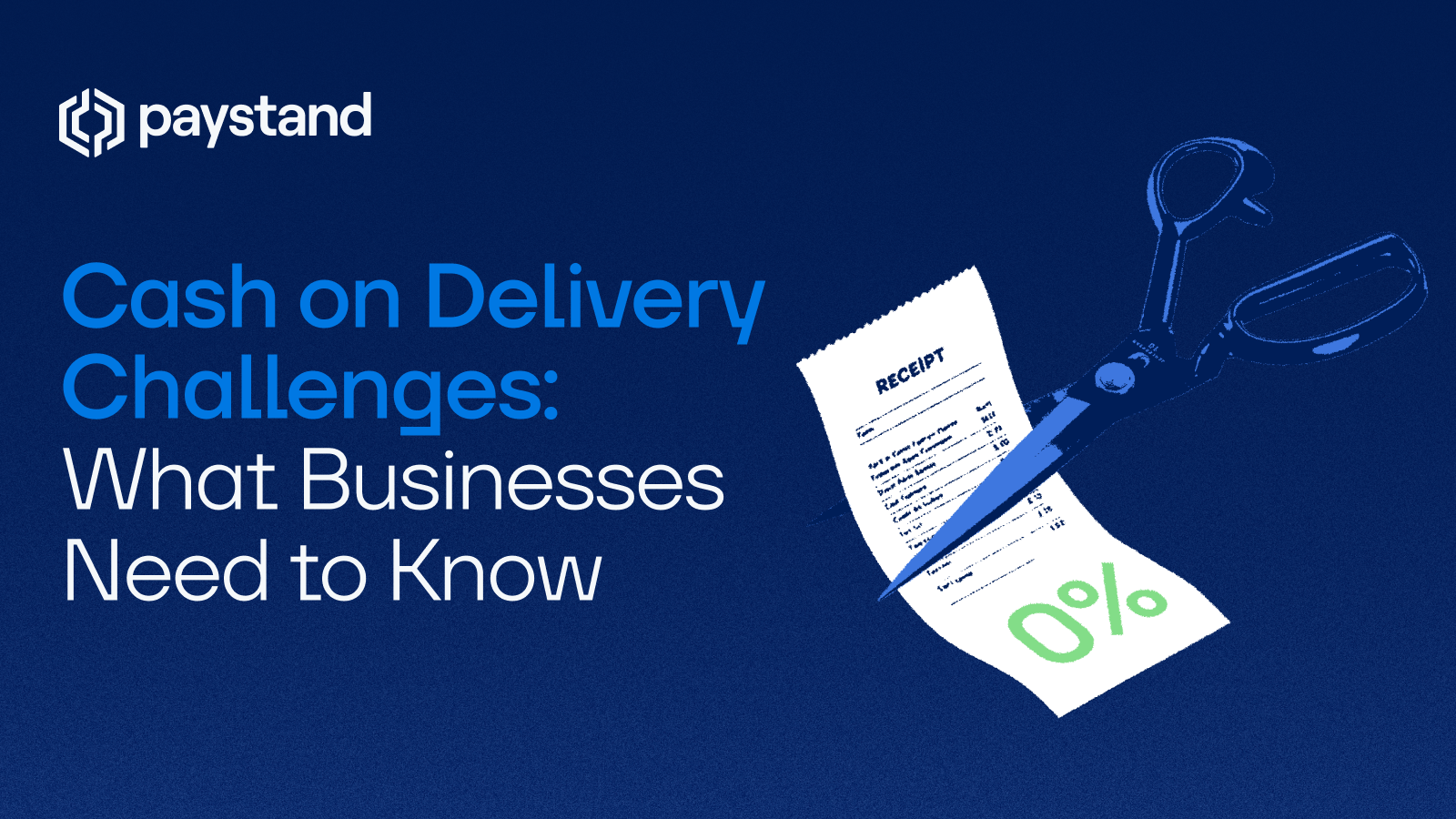Cash on Delivery Challenges: What Businesses Need to Know

Table of Contents
- What is Cash on Delivery?
- How Does Cash on Delivery Work?
- The Pros and Cons of Cash on Delivery
- What Are the Problems with Cash on Delivery?
- Overcoming COD Challenges with Collections Automation
Key Takeaways
- COD remains popular but risky: While cash on delivery attracts customers in markets with low digital payment adoption, it creates significant financial and operational risks for businesses.
- Payment delays hurt cash flow: COD increases accounts receivable exposure, delaying revenue recognition and making it harder to improve cash flow.
- High operational costs: COD requires additional labor, cash handling, and reliance on delivery personnel, which raises overheads and increases error or fraud risks.
- Inefficient logistics: Logistics companies face slower operations when managing both deliveries and collections, adding to shipping costs and customer return challenges.
- Digital payments are more efficient: Compared to cash on delivery COD, online payments enable faster reconciliations, reduced credit risk, and lower operating costs.
-
Automation is the solution: Collections automation helps businesses streamline receivables, reduce manual work, and encourage a shift away from COD toward more sustainable payment models.
Cash on Delivery (COD) remains one of the most popular payment methods in many regions, particularly in emerging markets. While offering COD can expand customer reach, it also presents unique financial and operational challenges. Businesses need to understand not only how cash on delivery works but also the risks and inefficiencies it creates in modern commerce.
What is Cash on Delivery?
Cash on Delivery (COD) is a payment option where customers pay for goods at the time of delivery rather than in advance. Instead of completing the transaction with digital payment methods like credit cards or online payments, COD transactions rely on cash payments upon receipt of goods.
For companies, COD represents a significant portion of accounts receivable, because the payment is collected after the product has already been shipped. This makes COD an attractive option for buyers who may not trust online transactions or who prefer paying in cash. However, it also shifts risk to the seller, as the order fulfillment process begins before payment is secured.
How Does Cash on Delivery Work?
In COD transactions, the process typically follows these steps:
- Customer places order – The buyer selects COD as their preferred payment option.
- Logistics companies ship products – Goods are dispatched by the seller or third-party delivery personnel.
- Delivery personnel collect payment – The customer pays in cash (or sometimes by card) at the time of delivery.
- Cash handling and reconciliation – Delivery staff remit funds back to the seller, requiring additional invoice reconciliation steps.
This process looks simple, but in reality, it increases operational complexity. COD orders often involve cash handling, increased shipping costs, and additional labor to ensure cash is properly transferred back to the business.
The Pros and Cons of Cash on Delivery
Like any payment option, COD has both benefits and drawbacks.
Pros of COD
- Customer trust: COD orders can attract first-time buyers who are hesitant about online payments.
- Market expansion: In regions where digital payment adoption is low, COD helps sellers access customers who rely on cash.
- Sales growth: Offering COD can increase conversions by lowering the barrier to purchase.
Cons of COD
- Cash flow delays: Since COD transactions are collected after delivery, they do not improve cash flow immediately.
- Credit risk: Customers can refuse delivery, leaving the seller with shipping losses and unsold inventory.
- Operational inefficiencies: Cash handling, fraud, and theft risks increase reliance on delivery personnel and manual processes.
- High costs: COD often requires cash-in-advance payments to logistics companies, raising the overall cost of doing business.
For a deeper look at balancing customer convenience with financial control, see Accounts Receivable Management and How to Calculate Cash Collections.
What Are the Problems with Cash on Delivery?
COD might still appeal to customers, but for businesses, the cons of cash often outweigh the pros. Common challenges include:
- Unpredictable accounts receivable: COD payments extend the receivables cycle, making it harder to forecast revenue. Learn how to improve accounts receivable collections.
- Operational risks: Errors or theft during cash handling create significant financial exposure.
- Logistical inefficiency: Delivery personnel must manage both product delivery and payment collection, slowing down operations.
- Customer returns: COD orders often experience higher return rates, adding to shipping costs and reverse logistics complexity.
- Missed automation opportunities: Unlike online payments, COD limits the use of tools like Invoice Reconciliation Automation and Invoice Management.
In the long run, these challenges make COD unsustainable for many businesses looking to scale. Companies are increasingly shifting toward digital payment systems that are faster, safer, and more efficient.
Overcoming COD Challenges with Collections Automation
COD may not disappear overnight, but businesses can mitigate its impact by adopting collections automation solutions. By digitizing the receivables process, companies can:
- Reduce reliance on manual cash handling.
- Accelerate payment reconciliation for COD and non-COD orders.
- Minimize credit risk by gaining visibility into receivables.
- Improve working capital by encouraging customers to shift from COD to digital payment methods.
Automation tools not only streamline collections but also help businesses build resilience against the operational inefficiencies of COD.
Learn how Collections Automation can help your business overcome COD challenges and accelerate growth.







%20(1)%20(1).jpg?width=100&height=100&name=IMG_3752%20(1)%20(1)%20(1).jpg)